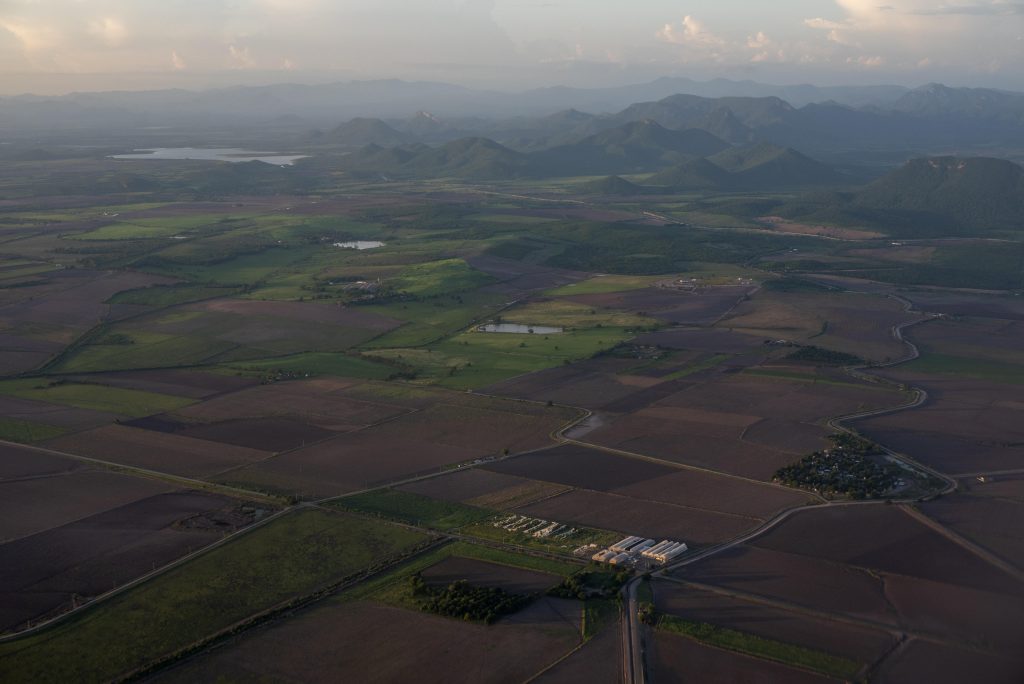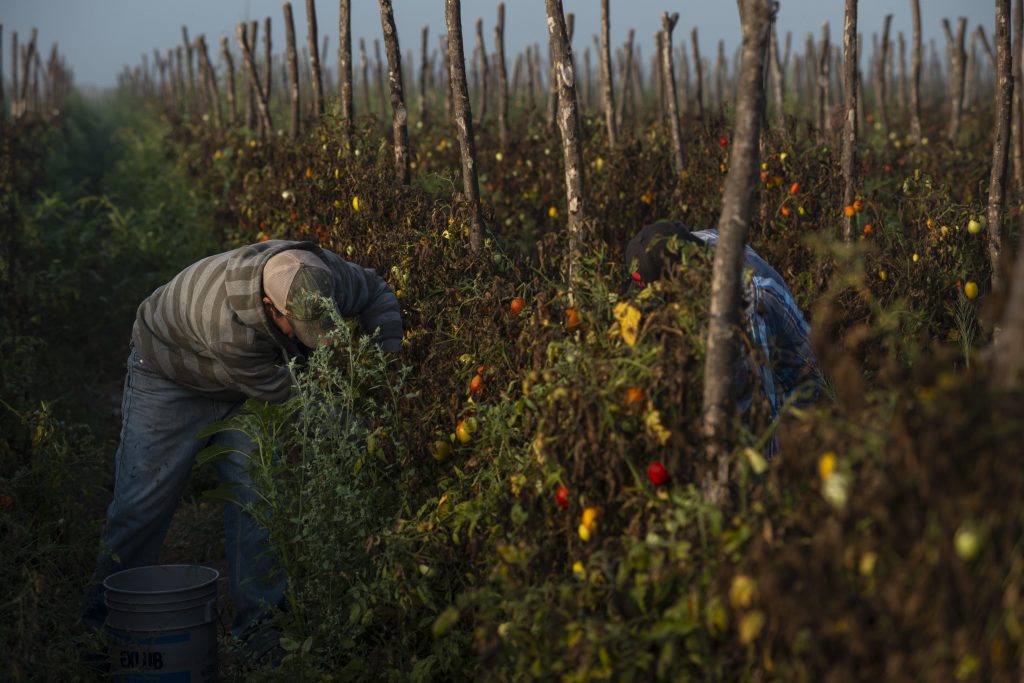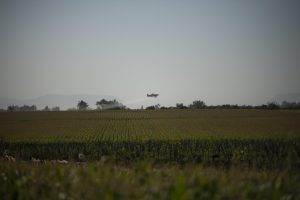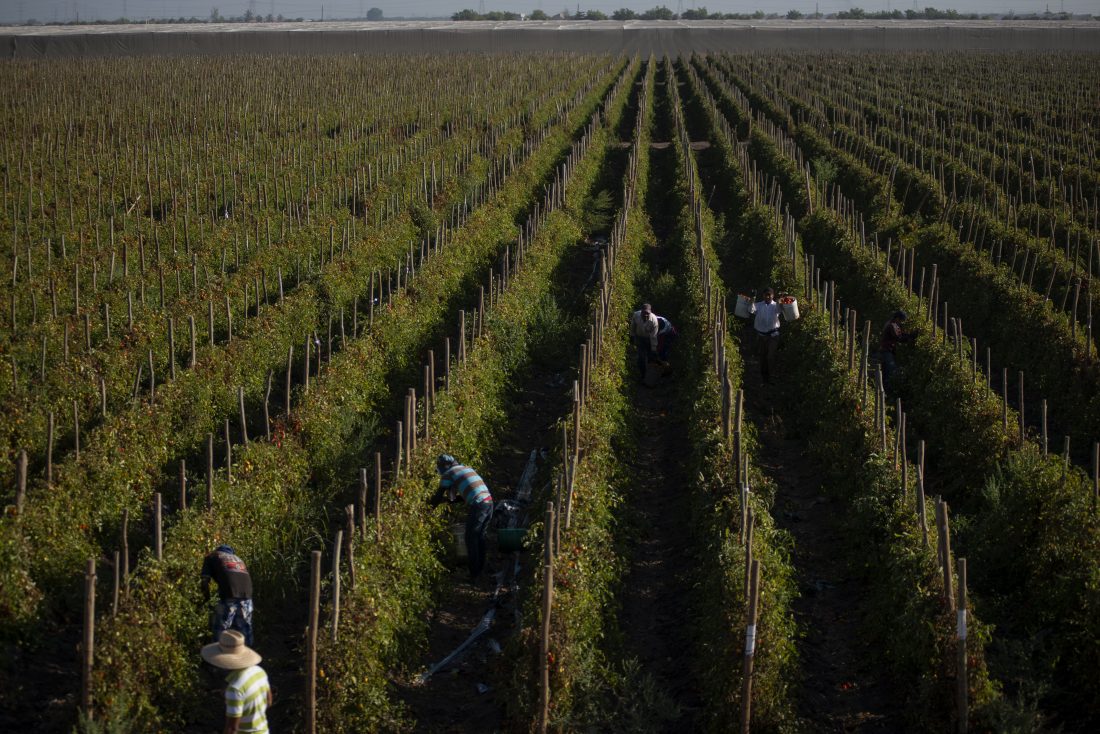This article is Chapter 3 of Noria MXAC “Violence Takes Place” Editorial Series.
“Drug trafficking organizations in Sinaloa have their roots in opposition to land reform in the 1930s”
Javier Valdez Cárdenas,
The Taken: True Stories of the Sinaloa Drug War.
Introduction
The Mexican state of Sinaloa often evokes conversations about drug lords. Less known, however, is that Sinaloa produces the corn that feeds Mexicans, the chilis that make foreigners cry, and the tomatoes that accompany kale salads and hamburgers on both sides of the border. Sinaloa’s illicit export economy, therefore, needs to be understood in the context of the state’s agricultural “miracle” which in turn depended on three factors: violent contestation of agrarian reform, racial exclusion and displacement, and international market shifts.
To develop this argument and challenge the received wisdom that opium growth in Sinaloa was a necessary byproduct of Chinese migration or the impromptu entrepreneurship of Badiraguato natives, we examine key events in agribusiness, land reform, and market shifts from the 1920s until the 1970s. To be clear, we do not assert there is a “narcotization” of Sinaloa’s agribusiness where proceeds from illicit activities necessarily finance licit markets. The analysis is not intended to be an exhaustive history of Sinaloa’s agribusiness or illicit export markets but instead focuses on critical junctures that help account for Sinaloa’s rise to prominence in illicit drug markets that were absent in other states in Mexico.

I – The Sonoran Dynasty and Racial Capitalism
Sinaloa’s green revolution is not a rags-to-riches linear story. Not every fruit or vegetable grown in the state became a $750-million-per-year commodity like the tomato1. Agrarian modernization and cycles of booms and busts left economic victims on their wake. More enduring, though, have been the local and transnational connections that tethered Sinaloa’s land, labor, and capital to US markets a century before the North American Free Trade Agreement (NAFTA) would do for the rest of the country in the 1990s.
Sinaloa did not enter the twentieth century as the nation’s breadbasket and cornucopia, but shifts in politics, consumption, and demographics helped transform the state into the nation’s top agricultural producer. After the Revolution (1910-1920), President of Mexico and native Sonoran Álvaro Obregón (1920-1924) promoted an agricultural vision through his commercial ties in Arizona and California and his experience as a garbanzo-bean farmer.
The Sonoran vision, however, was not agrarian reform for the masses who fought in the Mexican Revolution to usher in a new era of land distribution. Obregón imagined Mexico with a larger number of mestizo ranchers and agribusiness-oriented smallholders who raised crops for domestic and foreign consumption, and his successor and fellow Sonoran, Plutarco Elías Calles (1924-1934), followed suit. Sinaloa’s tomato production, for example, went from 1 ton in 1907 to 34,176 tons in 1926, primarily for US consumers. Unfortunately for most farmers, the Sonoran president’s agricultural vision aimed to benefit Mexican businessmen and property owners by capitalizing on US populations consuming more Mexican vegetables and industrial crops, cotton, sesame, and eventually soy, and safflower.
In Mexico, from its outset, agricultural reform and political centralization demanded human displacement.
For indigenous groups like the Mayo and Yaqui, who battled alongside Obregón during the Revolution, their land was rived rather than received. The Sonoran dream, which extended to Sinaloa, demanded Yaqui land, not Yaqui people. When the Yaqui decided to defend their river valleys in 1926, their former allies in the Federal Army butchered and displaced them.
From its outset, agricultural reform and political centralization demanded displacement. No one was safe. With burgeoning markets growing in the US and Mexico, Sonoran and Sinaloan planters continued to displace competition for their seat at the table. Chinese migrants also fell victims to violent and racialized displacement. Like the Yaqui or Mayo, the Chinese were excluded from the Sonoran vision of post-revolutionary Mexico. Drawing heavily from the anti-Chinese labor movement of California, Mexico’s anti-Chinese movement was a national enterprise of the post-revolutionary identity construction project that materialized most acutely in Sonora and Sinaloa. In less than a decade, these states expelled over ninety percent of their Chinese migrants. Nearly 6,000 migrants were deported in total, and in cities like Mazatlán and Culiacán, Chinese firms were expropriated by members of the local business class2.

Mexican politicians imagined the worst of its Chinese population. Newspapers tended to depict the Chinese disparagingly much like they had Yaqui and Mayo people and portrayed their mutual aid organizations as mafias and secret societies. In the early 1920s, this characterization was exacerbated when violent clashes occurred within the Chinese community in Mexico. They were interpreted as conflicts between Chinese groups over the opium trade3. Evidence shows, however, that these internal feuds echoed the political turmoil between Taiwan and mainland China, and were related to economic and political issues rather than illicit drug markets.
II – Agrarian Reform and Competing Forms of Social Control
Race and class also influenced agrarian reform in southern Sinaloa where it initially emboldened the rural bourgeois to respond violently in the 1930s and 1940s. Rather than continue to support landowner power in the countryside, Cardenista politics (1934-1940) and the cultivation of oilseeds changed the political economy of the state in favor of campesinos. The “Cardenista” variety of sesame seed developed in Michoacán did not grow well in Sinaloa, but several other strands proved useful in poor and sparsely irrigated ejido soils. Cárdenas expanded sesame seed cultivation in Sinaloa by 3300% in his sexenio. By facilitating contracts between Anderson Clayton and the National Ejido Credit Bank, Cárdenas also helped Sinaloa’s cotton industry explode 4500% between 1934 and 19404.
Oilseeds became central to Sinaloa’s economy but their use as industrial inputs, and their ability to grow in second-class soils, also meant fierce competition in the global markets, causing massive price fallouts and rural insecurity. This was especially true in Sinaloa, where cotton and sesame seed cultivation aimed to incorporate ejido production into the national economy through local, national, and international markets.

Violence was centered around Mazatlán where new, sesame growing ejidos changed the political economy of the previous agricultural vision. In response to the redistribution of land for sesame, many landholders mobilized armed militias called guardias blancas to terrorize and control organized labor. One local journalist described how guardias blancas seemed to kill ejidatarios everyday between 1938 and 1943 at the behest of large landowners, such as the Tirado and Ibarra families5.
While perpetrators of violence were of modest origins, the capital behind them, certainly was not.
Guardias blancas attacked entire pueblos and gunned down agrarian leaders who spoke out against landholders and in favor of agrarian reform. Regrettably, it is impossible to know the exact number of agraristas murdered, but the national magazine Tiempo reported armed militias led by pistoleros (hired gunmen) killed nearly 800 farmers in 1942. The publication mentioned several gunmen who terrorized organized laborers in the region—such as “el Culichi”, “el Chato”, “el Güerillo”, “el Churias”, and “el Gallito”—but one name was particularly ubiquitous: Rodolfo Valdéz, or “el Gitano”. After only a few years of agrarian reform, Valdéz gained praise from anti-agrarian smallholders who happily paid the pistolero to assault the ejidatarios they demonized as “other”. Valdéz became so infamous that he was allegedly hired to assassinate the governor of Sinaloa in 1944.
That same year, the military formally occupied southern Sinaloa in a counterinsurgency operation against guardias blancas and pistoleros like Valdéz. These “campañas contra pistolerismo” (counter- gunmen operations) effectively exacerbated violence among private armed groups and local and federal forces. More importantly, they exposed how private organized violence could contest state authority in rural areas, and, while perpetrators of violence were of modest origins, the capital behind them, certainly was not.
Vituperative landowners like the Tirado and Ibarra families are but two examples of how individuals with access to land and capital wielded their economic and social power from licit agriculture and guardias blancas to enter the business of trafficking oilseeds like marijuana and opium poppies. In the early 1950s these armed groups began using pistoleros to ward out-of-state traffickers aiming to score on Sinaloan narcotics6. This does not mean that every family in possession of land and muscle entered illicit markets, rather it illustrates how Sinaloa’s rise in commercial agriculture and violent pushback against land reform created the conditions for serving profitable production areas
III – Local and International Market Shifts
With the table cleared and the guest list set, consolidation took hold. When Sinaloa surpassed Veracruz as Mexico’s top agricultural producer in 1948, it did so on the backs of many failed crops and struggling farmers. In addition to agrarian violence, the shifty intensification of agricultural production in Sinaloa in the 1950s raised the cost of farming and the levels of economic insecurity for small-scale farmers.
Like old staple crops of the regional economy, such as sugar and garbanzo beans, sesame and cotton often busted on the market suddenly leaving vulnerable farmers even worse off. The Confederación de Asociaciones de Agricultores del Estado de Sinaloa (CAADES per its Spanish acronym7) established in the 1930s by businessmen and supported by then-governor of Sinaloa and garbanzo bean farmer, Macario Gaxiola (1929-1932) insulated businessmen from these shifts, but many local peasant farmers lost land, migrated, or grew illegal cash crops to survive8. Growing opium poppies was especially common in four municipalities: Culiacán, Mocorito, Sinaloa, and Badiraguato.

State officials and local agribusiness people argued that modernization in the countryside would improve the lives of ejidatarios, but in many cases, the new dams, paved roads, and increased yields had the opposite effect. Fertilizers, tractors, and hybrids seeds became more essential to harvesting competitive and enormous yields for a globalizing and erratic market, and most farmers simply could not keep up. The number of landless farmers increased by 1 500% in the 1960s, to nearly 21,000 by 1970. In the wake of modernization, opium became a fundamental crop for many farmers, and as prices for heroin skyrocketed in the early 1970s, drug traffickers and affiliated landholders increasingly applied more direct pressure on poor farmers to grow drugs.
Transnational shocks, in combination with local developments in Sinaloa, help explain why this Mexican state would become a prominent player in illicit drug markets.
At the international level, several shifts in illicit drug markets in the 1970s put Sinaloa in a unique position. In the early 1970s, the US pushed for a ban on Turkish farmers that would prevent them from legally cultivating opium alleging the heroin addiction problem in the US. While some of the opium gum was sold to the Turkish agricultural market organization, who in turn sold it to pharmaceutical companies for the production of morphine, heroin manufacture incentivized diversion from legal channels. The ban affected an estimated 70,000 Turkish farmers who reportedly fail to see the connection between their legitimate source of income and substance abuse disorders in the US9.
The ban on Turkish opium also disrupted heroin supply chains from Europe to the United States. The so-called “French Connection” network used opium gum from Turkey to manufacture heroin in the city of Marseille for shipment to the US. Ultimately, the “French Connection” diminished in importance, as intended by the US-conceived Turkish ban, but the unintended consequences materialized in Sinaloa. Transnational shocks, in combination with local developments in Sinaloa, help explain why this Mexican state would become a prominent player in illicit drug markets. While farmers in Turkey were excluded from a legal economy, previously disenfranchised farmers in Mexico took their spots in an illegal one.
Absent Sinaloa’s world-class agribusiness, however, intermediaries in Sinaloa would have lacked know-how for distributing outputs from illicit crops as well as market opportunities in the US. Sinaloa’s involvement in illicit drug markets was not the obvious result of Chinese migration nor the ingenuity of some farmers in Badiraguato at a random point in time. Rather, it was a decades-long process involving established connections to US markets and changes to land and labor in Sinaloa bolstered by a significant disruption to the opium poppy economy.
Conclusion – Setting the table
In the winter of 1972, tensions were high at driving checkpoints and customs offices across Mexico. It was hard to know where to look, and, due to time restraints, where not to look.
Drugs could crop up anywhere. In Mexico City, marijuana was found in tortas, wedged like milanesa between sliced avocado and pickled carrots. Officials cracked open walnuts to find heroin in Sonora. These discoveries, however, paled in comparison to the two tons of marijuana packed within 1,600 tons of Sinaloan onions that officials found in Tijuana in February 1972. The packaging was no coincidence. By the early 1970s the table was set, and Sinaloa took its place at the head with the US as its main guest.
Notes
- https://datamexico.org/es/profile/geo/sinaloa-si#economia ↩︎
- Julia María Schiavone Camacho, Chinese Mexicans: Transpacific Migration and the Search for a Homeland, 1910–1960, University of North Carolina Press, 2012. ↩︎
- Fredy Gonzalez, Paisanos Chinos Transpacific Politics among Chinese Immigrants in Mexico, University of California Press, 2017. ↩︎
- Rigoberto Arturo Román Alarcón, La economía del sur de Sinaloa, 1910-1950, DIFCR, 2006. ↩︎
- La Vida Novelesca y Accidentada de Rodolfo Valdez El Gitano, El Correo de la Tarde, 1949. Author unknown. ↩︎
- Benjamin T. Smith in conversation with the author Jayson Maurice Porter. ↩︎
- Roughly translated to: Confederation of Farmers’ Associations of the State of Sinaloa ↩︎
- Eduardo Frías Sarmiento, Oro rojo de Sinaloa, Universidad de Guadalajara, 2008. ↩︎
- https://www.nytimes.com/1973/08/09/archives/opium-poppy-gone-turkish-farmers-ask-whv-has-us-done-this-to-us.html ↩︎

